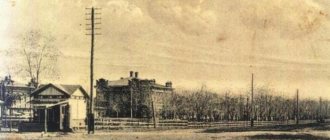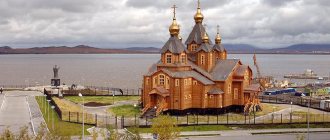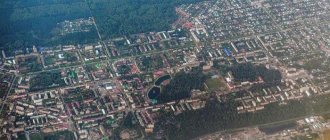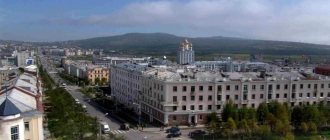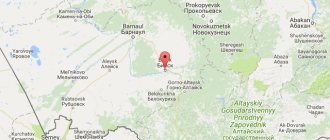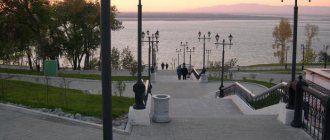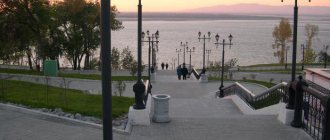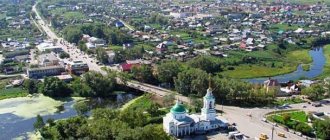You can often hear about a city like Norilsk. And it is not surprising, since this is a large settlement that deserves special attention. It occupies a fairly large area and is home to many production and industrial facilities. It is worth getting to know this wonderful city better. Norilsk, which has a small population, has many interesting sights. The article will also talk about climate, nature, and interesting facts related to this locality.
Norilsk: general information about the city
The city is located in the Krasnoyarsk Territory and is the administrative center of the district. Interestingly, it ranks second in terms of the number of people living on its territory (Krasnoyarsk is in first place).
The city is located in a rather harsh climatic zone. Norilsk received the status of the northernmost city, home to a population of more than 150 thousand people.
However, his records don't end there. The city of Norilsk is among the settlements with the worst environmental conditions. This happened due to the fact that the main activities of the city are mining and metal production. This area has become a leader because there are no industrial zones of this scale anywhere else in the world.
Another interesting fact is that entry into the city is closed to foreign citizens. To visit Norilsk, foreign tourists must undergo the procedure of obtaining a special permit. Such measures have been in force since 2001. Before this, since 1991, foreign citizens could freely visit Norilsk.
What areas are included in the city?
Previously, Norilsk was not such a large settlement. After the annexation of neighboring cities, it became much larger. Norilsk consists of several districts:
- Central.
- Talnakh.
- Kayerkan.
- Snezhnogorsk
- Oganer.
They are all noticeably different from each other. Some districts, for example Central, were built earlier; Leningrad architects were invited to design them. Others date back to a later period. They are mainly built up with houses built according to standard designs.
Norilsk: population and its characteristics
Now it’s worth taking a closer look at the issue concerning the city’s residents. To begin with, it should be noted that a strong increase in the population of Norilsk occurred after 2 more settlements were annexed to it, which bear the names Talnakh and Kayerkan. Currently they are districts of the city. In this regard, the population of Norilsk has increased significantly.
According to 2015 data, the number of local residents is 176,251 people. Recently, there has been a tendency for many people to leave Norilsk. The population has decreased greatly. A particularly serious decline was noticed in 2014. In the previous year, 2013, the number of residents was 177,738 people, in 2014 – already 176,559. In 2015, the decline in numbers continued.
If we look at the ranking of Russian cities by number of inhabitants, Norilsk ranks 105th, which is a fairly high figure. In total, there are about 1114 cities on the list. So, we have become familiar with the data on the city’s population in detail, and now it’s worth moving on to considering its national composition.
Enterprises of Norilsk and the city-forming sphere of activity
About half of the city's residents work at mills and factories that are part of. It includes the Nadezhdinsky Metallurgical Plant, as well as copper and nickel plants. The company is a mining and metallurgical company. This is the main complex around which all the city's activities are built. It is not for nothing that it is called a “calling card”, although visits, as we have already said, are limited here.
But the location of the enterprise is not entirely favorable. Wind from any direction brings sulfur, phenol and heavy metals directly into the city. Acid rain is not uncommon here, and houses are covered in industrial dust. The waste here exceeds the emissions of Western European countries combined. For example, about 2.4 million tons of sulfur antigrid evaporate into the air when working with Talkhan ores.
This amount of waste significantly pollutes the environment and affects public health. 10 MPC is a fairly significant figure showing the content of sulfur dioxide in the air. And although carbon dioxide from Norilsk CO2 emissions is 2%, there is severe water pollution in this area. Some emissions simply end up in lakes, and the rivers have long since lost their former living creatures.
Despite so much dirt in the air, smog is not typical for Norilsk. The wind blowing from the north carries all the dust outside the city. It also settles there, but is not carried into the Arctic Ocean. Instead of water, the tundra and forest-tundra are polluted, and an incredible amount of emissions are absorbed by the soil. It is prohibited to pick berries and mushrooms in Norilsk; they contain dangerous amounts of copper and cadmium. In addition, people cannot drink tap water because it is unfit for consumption. According to environmentalists, the city's pollution has long exceeded all limits.
National composition of the population
It is necessary to analyze in detail who lives in this region. The city of Norilsk boasts a rich national composition. Since ancient times, several indigenous peoples have lived here, among whom were the Nenets, Nganasans, Dolgans, and Enets. Nowadays they can be found here quite rarely. As for the permanent population, now Norilsk is mainly dominated by Russians, Ukrainians, Azerbaijanis and other peoples. There are practically no indigenous people left here. The city is mostly inhabited by people who moved here in the middle and end of the 20th century, as well as their descendants.
A noticeable influx of population into this city was due to the widespread development of industry and other local enterprises. A large number of jobs were created here, as well as infrastructure that made life in this place more comfortable.
Features of living in the city
Separately, it is worth paying attention to the characteristic features of local life, of which there are quite a few. These features were formed over a long period, taking into account the climatic, weather and geographical conditions in which Norilsk is located. The population of the city has a special attitude towards preparing food and eating it. There are a large number of fishermen and hunters among the city residents. Thanks to this, shish kebab and sugudai are common dishes. The second one is worth talking about in a little more detail. Sugudai is a snack consisting of raw fish, to which vegetable oil, salt, pepper, onion, grated apple, vinegar and various spices are added. As for other popular products, residents of the city often pick mushrooms, blueberries, lingonberries and cloudberries.
Prices in Norilsk are at an average level, but for some seemingly ordinary products they are too high here. For example, bread can be bought for 60 rubles, a kilogram of chicken meat - for 132 rubles, a kilogram of rice - for 70 rubles, vegetable oil costs 89 rubles. Prices for buckwheat in Norilsk start at 160 rubles, apples are priced at 109 rubles, potatoes cost 53 rubles, and onions – 70 rubles.
It is believed that Norilsk belongs to the Taimyr Peninsula. This region can be reached by two modes of transport: water or air. There is no land connection with the rest of Russia (the so-called mainland).
City climate
Natural and weather conditions in Norilsk are quite harsh. The city is located in the Far North, and therefore the local climate will be very harsh for a person not accustomed to it. The weather in Norilsk is usually cold. The climate here is subarctic.
The city is considered one of the coldest in the world. So, many people are interested in what kind of weather happens most often in Norilsk? Winter here lasts a long time and is characterized by severe cold. In January the average temperature is about -28 ⁰C. Typical winter weather is frequent frosts with strong winds. The cold period here lasts about 280 days, it begins in mid-September and lasts until the beginning of May.
Summer begins only at the end of June and lasts until the end of August. It is usually cloudy and cool. The average temperature in July is about +10.7 C. If we talk about the average annual temperature, it is -9.6 C.
Another interesting fact is that Norilsk is included in the list of the five windiest settlements in the world.
Houses in Norilsk
| № | Address | Year | Floors | Entrances | Apartments |
| 1 | edge. Krasnoyarsk, Norilsk, st. Pozhdepo, 1 | 1983 | 9 | 2 | 64 |
| 2 | edge. Krasnoyarsk, Norilsk, st. Polyarnaya, 1 | 1974 | 9 | 4 | 137 |
| 3 | edge. Krasnoyarsk, Norilsk, pl. Metallurgov, 1 | — | 9 | 4 | 128 |
| 4 | edge. Krasnoyarsk, Norilsk, st. Rudnaya, 1 | 1987 | 9 | 5 | 179 |
| 5 | edge. Krasnoyarsk, Norilsk, st. Kirova, 1 | 1952 | 5 | 5 | 85 |
| 6 | edge. Krasnoyarsk, Norilsk, st. Mira, 1 | 1960 | 5 | 17 | 331 |
| 7 | edge. Krasnoyarsk, Norilsk, st. Sevastopolskaya, 1 | 1948 | 5 | 3 | 37 |
| 8 | edge. Krasnoyarsk, Norilsk, proezd. Molodezhny, 1 | 1970 | 9 | 2 | 355 |
| 9 | edge. Krasnoyarsk, Norilsk, st. Sovetskaya, 1 | 1956 | 5 | 8 | 154 |
| 10 | edge. Krasnoyarsk, Norilsk, proezd. Solnechny, 1 | — | 5 | 4 | — |
Showing 1 - 10 of 886
Nature
Many people are interested in what natural zone is Norilsk located? On the map, it is located almost on the Taimyr Peninsula, where forest-tundra dominates. This type of landscape is characterized by certain features. Mostly here you can see open forest, which alternates with shrub tundra.
Thus, it becomes clear in which natural zone Norilsk is located. You can also see on the map that a large number of rivers flow here.
Despite the harsh natural conditions, this area has a fairly diverse fauna. The fauna in the forest-tundra is mainly represented by lemmings, reindeer, shrews, and arctic foxes. These places are popular among hunters.
Among the birds you can often see here are various types of partridges, polar owls and others. This region is home to many migratory birds.
Houses along the streets in Norilsk
- 50 years of October st.
- Anisimova st.
- Baumanskaya street
- Begicheva st.
- Bohdana Khmelnytsky St.
- Veteranov st.
- Gornyakov st
- Dzerzhinsky street
- Dikson st
- Dudinskaya st.
- Yeniseiskaya street
- Zavenyagina st.
- Igarskaya st.
- Kirova st.
- Komsomolskaya street
- Kosmonavtov st.
- Kotulsky passage
- Krasnoyarskaya street
- Laureatov st
- Leningradskaya street
- Leninsky Prospekt
- Lesnaya st.
- Lomonosova st.
- Maslova st
- Metallurgov Sq.
- Mira st
- Mikhail Kravets st.
- Mikhailichenko passage
- Molodezhny Proezd
- Moskovskaya street
- Embankment Urvantseva st.
- Nadezhdinskaya st.
- Nansen st
- New street
- Norilskaya street
- Ozernaya st.
- Ordzhonikidze st.
- Pavlova st
- Pervomaiskaya street
- Pervokhodtsev St.
- Pionerskaya street
- Pobedy st.
- Pozhdepo st
- Polyarnaya st.
- Pushkina st.
- Rudnaya st.
- Sevastopolskaya street
- Sovetskaya st.
- Sunny passage
- Stroiteley st.
- Stroitelnaya street
- Taimyrskaya street
- Talnakhskaya street
- Fedorovsky St.
- Khantayskaya street
- Shakhterskaya street
- Shkolnaya street
- Entuziastov st.
- Yugoslavskaya street
Timezone
We got to know in detail the nature and climate in which Norilsk is located. Time here also deserves special consideration. The settlement lies in the time zone called “Krasnoyarsk time”. The difference with Moscow is 4 hours. Thus, when it is 12:00 in Moscow, it is already 16:00 in Norilsk. In Russia this time zone is designated as MSK+4. According to worldwide notations, the city is located in the UTC+7 zone. In addition to the Krasnoyarsk Territory, where Norilsk is located, this time is set in the territory of 5 more regions of Russia. Accordingly, we became acquainted with the time zone in which Norilsk lies. Time is not translated here, as in other regions of the country.
Emergency houses in Norilsk
Houses that have been declared unsafe.
| № | Address | Year | Floors | Entrances | Apartments |
| 1 | edge. Krasnoyarsk, Norilsk, st. Dzerzhinsky, 3, building 1 | 1961 | 5 | 3 | 47 |
| 2 | edge. Krasnoyarsk, Norilsk, st. Moskovskaya, 14 | — | 5 | 3 | 57 |
| 3 | edge. Krasnoyarsk, Norilsk, st. Nadezhdinskaya, 18 | 1977 | 9 | 1 | 312 |
| 4 | edge. Krasnoyarsk, Norilsk, st. Shakhterskaya, 18 | 1977 | 9 | 1 | 295 |
| 5 | edge. Krasnoyarsk, Norilsk, st. Moskovskaya, 31 | — | 9 | 2 | 329 |
| 6 | edge. Krasnoyarsk, Norilsk, st. Laureatev, 31 | 1974 | 9 | 2 | 346 |
| 7 | edge. Krasnoyarsk, Norilsk, st. Laureatev, 75 | — | 9 | 2 | 348 |
Sights and culture of Norilsk
It is worth talking about what historical heritage sites exist in this wonderful city. There are several museums in Norilsk, for example the Art Gallery, as well as the museum of the history of the exploration and development of this region. The gallery is widely known and enjoys great popularity. This is the second largest collection of art objects in the entire Krasnoyarsk region. She started her work in 1980.
Not only museums, but also theaters are open in Norilsk. The Drama Theater named after V.V. Mayakovsky operates here, as well as a youth theater. In a word, cultural life here is well developed and represented in various directions. You should definitely visit the listed institutions when coming to Norilsk. Reviews of museums and theaters are mostly positive. The gallery is especially attractive to visitors as it houses some unique works. There are also other attractions in Norilsk that are worth paying attention to.
Norilsk
Basic moments
Norilsk includes the Oganer residential community, whose population is about 10 thousand people. The head of the municipal formation “City of Norilsk” is Sergei Aleksandrovich Shmakov, elected by members of the city council in December 2007.
The cities of Norilsk and Dudinka do not have the status of ZATO, but visiting them by foreign citizens (except for citizens of Belarus) since November 25, 2001 is possible only with permission from the authorities; before that, for 10 years (since 1991), entry for foreigners was free.
Story
People knew about the presence of mineral resources in the area of modern Norilsk back in the Bronze Age: a site of Bronze Age people was discovered near Lake Pyasino, where primitive equipment for smelting and casting and raw materials (balls of native copper) were found. In the 16th-17th centuries, copper from the Norilsk deposits was used by the inhabitants of Mangazeya. Mangazeya is a city located above the Arctic Circle on the Taz River; this polar settlement received city status in 1603. Mangazeya was a trade and craft center; during excavations of Mangazeya in 1972-1975, Professor M. I. Belov discovered an extensive foundry yard. The remains of copper items found in Mangazeya contained platinum group metals, which suggests that the ore for smelting was brought from the Norilsk deposits. The decline of Mangazeya in the second half of the 17th century is associated with the order of the government of Tsar Alexei Mikhailovich banning travel to Mangazeya by sea. This government measure was caused by fears for the integrity of the Siberian borders, since the Northern Sea Route attracted the states of Western Europe (England, Holland) as a possible route to India. The sea route to Mangazeya was closed, and a streltsy cordon was set up on the Yamal portage. At the end of the 19th century, merchant K. M. Sotnikov made an attempt to smelt copper from Norilsk ore; he was able to smelt about three tons of blister copper, after which the furnace he built collapsed due to uneven settlement of permafrost.
Further study of the Norilsk region is associated with the expeditions of N. N. Urvantsev in 1919-1926, which confirmed the presence of rich deposits of coal and polymetallic ores in the eastern spurs of the Putorana plateau.
In 1921, during Urvantsev’s expedition, a wooden hut was built, which is considered the first house of Norilsk (the house has survived to this day, now it is the “first house of Norilsk” museum). In 1935, the construction of the Norilsk plant began with the help of Gulag prisoners. In March 1939, the first matte was produced at the Small Metallurgical Plant, in June 1939 - the first high-grade matte, in 1942 - the first nickel (anodic, cathodic). Until 1951, the village of Norilsk and the industrial site of the Norilsk plant were located at the northern foot of Mount Schmidt, where Urvantsev built the first house (Zero Picket); Currently, this is the so-called “old” city; there are no residential buildings there now. At the end of the 1940s, design began, and in 1951, construction of a “new” city began on the eastern shore of Lake Dolgogo. The construction of the city was also started by prisoners of the Gulag (Norillag). In 1953, the village of Norilsk received the status of a city, and most of its former prisoners received the status of citizens.
In memory of the “camp” period in the history of Norilsk, memorial structures were erected in the city. Here is how Boris Ivanov writes about the most famous of them in his book “Payment for Platinum”:
In the center of Norilsk, on Gvardeyskaya Square, “in an atmosphere of solemnity” they even installed the foundation stone, promising to erect a monument in this place to those who created the foundation of the plant and the miracle city. This basalt block weighing 100 pounds was delivered from Mount Rudnaya. On the plate attached to it it is written: “An obelisk will be built here, always reminiscent of the feat of the Norilsk people who conquered the tundra and created our city and plant.” By historical standards, the laying took place recently, on June 26, 1966...
Note: the stone remained in the square; no obelisk was erected in its place. Despite the fact that for most citizens the stone itself has long become a monument and does not require replacement, the city from time to time again organizes competitions for designs of a memorial structure for Gvardeyskaya Square.
For the truly first, mass graves were arranged on the slopes of Mount Schmidtikha. They say that there are countless human skulls and bones here. The Poles, the former Soviet Baltic states, erected a memorial complex in this place of mournful memory. Lamps are also burning in the Orthodox chapel located on the slope. But all this is located so far “from the people”, from the busy Norilsk intersections, that it is impossible to see the memorial without a special excursion trip.
Note: nowadays there is a regular bus to the memorial complex.
A milestone in the further development of the Norilsk region was the discovery in 1966 of the Oktyabrsky copper-nickel ore deposit, located 40 kilometers northeast of Norilsk. At the same time, the mining town of Talnakh was founded. To process raw materials from new deposits to the west of Norilsk, at a distance from the city, the Nadezhdinsky Metallurgical Plant was founded and built by 1981, and with it the second satellite city of Kayerkan, the city of metallurgists.
Norilsk got its name from the name of the area where it is located: the Norilka River flows near the city (the basin of the Pyasina River), the city itself is located near the Norilsk Mountains. Travelers Khariton Laptev, A.F. Middendorf, F.B. Schmidt mention the Norilka River and the Norilsk Mountains in their reports. The Norilka River probably got its name at the time when Taimyr was inhabited by Russian fishing people in the 16th-17th centuries during the existence of the city of Mangazeya. Probably, the name of the river came from the word “norilo” - a long thin pole, which was used to stretch the string of set nets under the ice from hole to hole. According to another version, the name of the river and, accordingly, the city comes from the Evenki word “narus” or the Yukaghir “nyoril”, which means “swamps”.
Population
Currently, the population of Norilsk consists almost entirely of people who moved to the city in the second half of the 20th century. and their descendants, however, the city is still inhabited by “indigenous” people - descendants of prisoners amnestied in 1953. Due to the lack of land communication with the “mainland” (“mainland”), those living in Norilsk have developed a number of striking cultural features characteristic only of this city.
Among these features one can highlight the attitude towards preparing and eating food. In particular, this applies to fresh fruits, meat and fish - among the population there are many hunters and fishermen who are especially skilled in preparing shish kebab and sagudai. Mountain, river and tundra tourism is popular among city residents. Skiing, alpine skiing, and snowboarding are popular due to the abundance of mountains and the very long season. For this purpose, the “Ol-Gul” ski resort and the “Otdelnaya Mountain” ski resort were created.
As in other cities that appeared at the city-forming metallurgical enterprises, the local population celebrates Metallurgist Day on a large scale. People of indigenous northern nationalities (Nenets, Dolgans, etc.) celebrate the holiday of Heiro - the return of the Sun to the sky after the polar night.
A program is underway to resettle residents from the north. Since the city is located on the Taimyr Peninsula, the rest of Russia is usually referred to as the “mainland”; the expression “move to the mainland” is common. Over the past few years, the population of Norilsk has decreased by more than 30 thousand people, and continues to decrease every year by several thousand people.
Architecture
In the architecture of Norilsk, trends can be traced due to two factors: firstly, the peculiarity of the construction of buildings on permafrost soils, and secondly, the standard designs that existed during construction. The design of many buildings shows a stylistic similarity with the architecture of St. Petersburg. The city's districts are clearly divided according to the time of construction. A special area (currently non-residential) - “Old Town”, allows us to trace the history of the development of engineering thought of Norilsk builders, who sought, in particular, to increase the height of buildings and the number of floors (which is due to the small amount of land suitable for development).
Economy of the city
The city-forming enterprise is the Polar Branch of the Mining and Metallurgical Plant (formerly the Norilsk Mining and Metallurgical Combine). Norilsk is a major center of non-ferrous metallurgy. Non-ferrous metals are mined here: copper, nickel, cobalt; precious metals: palladium, osmium (powder), platinum (ingots, powder), gold (ingots, powder), silver (ingots, powder), iridium (ingots), rhodium (powder), ruthenium (powder). By-products: metal selenium, industrial sulfur, metal tellurium, sulfuric acid. The Norilsk plant produces 35% of the world's palladium, 25% of platinum, 20% of nickel, 20% of rhodium, 10% of cobalt. In Russia, 96% of nickel, 95% of cobalt, 55% of copper are produced by the Norilsk Combine. Enterprises of the Norilsk Combine produce toxic emissions into the atmosphere in large quantities, as a result of which the environmental situation in the city is catastrophic.
The outport of Norilsk is the port city of Dudinka, with which Norilsk is connected by road and railway. There is no land connection with other cities of the Russian Federation. Air communication is via Alykel airport.
Ecology
According to the Blacksmith Institute, Norilsk is one of the most polluted cities in the world.
Environmental monitoring at the Norilsk plant has long been developed, organized and implemented. Data is being collected and analyzed on chlorine, heavy metal aerosols, hydrogen sulfide, sulfuric acid, selenium dioxide, carbon sulphide, hydrogen fluoride and other harmful substances.
Some official indicators of environmental pollution are:
- emissions of pollutants into the atmosphere in 1986-1996 ranged from 1937 million tons to 2394 million tons;
- the range of standardized polluting ingredients from 1986 to 1996 increased from 18 to 31 positions; the largest contribution is made by sulfur dioxide (up to 98%)
- For solid dirt alone, the limit for all man-made emissions into the atmosphere in 1996 was 26,678 thousand tons.
- Life expectancy in Norilsk is 10 years less than the Russian average.
The content of pollutants in the atmosphere of Norilsk is rarely below 4-5 MAC, reaching 25.8 MAC (nitrogen dioxide, 1993), 35.6 MAC (sulfur dioxide, 1992) and even 120 MAC (formaldehyde, 1995). Around Norilsk, about 100,000 hectares of forest-tundra have been burned or are doomed to die. According to some ecologists, Norilsk is an environmental disaster zone.
Carbon dioxide emissions from Norilsk enterprises account for 2% of the world's.
The main problem is that the traditional measures taken to reduce environmental pollution have practically exhausted themselves. A constructive measure to comply with environmental safety can probably only be a revolutionary technological reorganization of the plant.
Education and culture
In Norilsk there is one university - the Norilsk Industrial Institute, several branches of universities in other cities of the Russian Federation, pedagogical and medical schools, there is the Polar Drama Theater named after. V.V. Mayakovsky, art gallery, Museum of the history of exploration and development of the Norilsk industrial region, Research Institute of Agriculture of the Far North.
The system of general and special secondary education is widely developed. The city has schools with in-depth study of the exact sciences (for example, Physics and Mathematics Lyceum No. 1), gymnasiums (multidisciplinary gymnasium No. 4, gymnasium No. 48 in Talnakh), music and sports educational institutions, art schools, and secondary specialized education institutions.
The city has an Orthodox church “Joy of All Who Sorrow” and a mosque, which is the northernmost in the world.
Architectural sights of Norilsk and their features
Interestingly, some areas of Norilsk are surprisingly reminiscent of St. Petersburg. Many will wonder: why do the two cities have such similarities? This is primarily due to the fact that many Leningrad architects were invited to Norilsk and designed various buildings. Once here, you should definitely see the houses located on Leninsky Prospekt and Gvardeyskaya Square.
After some time, the architecture of the city changed somewhat, since in the 1960s, standard buildings became popular here, as in many other settlements in Russia.
The construction and architecture of Norilsk has a lot of features. They are mainly due to the fact that when constructing buildings on permafrost soils, specific factors must be taken into account. Here the architects were able to gain unique experience in construction in harsh natural conditions. Subsequently, this knowledge was actively used in other cities with a similar climate.
Decades of confrontation with nature and officials
One of the main questions facing city designers is how to minimize the impact of strong winds on the lives of citizens. The first solutions to this problem were unsuccessful. Initially, it was planned to plan the city so that its streets, located along the line of prevailing winds, would sweep snow outside the populated areas. But the winds were too strong and there was too much snow, so they decided to make the city blocks closed and compact. It was the block development that determined the appearance of Norilsk.
Zavenyagin’s idea of a garden city could not be realized. It was not possible to grow a park of massive trees encircling and protecting the city from wind and snow; trees of the required thickness simply did not take root.
Photo: Maxim Blinov / RIA Novosti
The bureaucracy caused a lot of problems in Norilsk urban planning. During the camp times, all construction projects were required to be coordinated with the relevant ministry in Moscow. As a result, some socially significant objects in Norilsk either never appeared, or their plan was greatly modified. For example, the swimming pool, built in 1959, was conceived in the late 1940s. However, paperwork and various redevelopments of the facility dragged on for a whole decade.
The 19-story plant management building was not built either. The townspeople, who always dreamed of high-rise buildings, hoped to see it first on Gvardeyskaya Square, then on Teatralnaya Square, or at least on Metallurgists Square. But this was not expected.
Norilsk residents also did not see three unrealized tram projects, an overhead monorail, a granite embankment, an air terminal and a huge residential complex for 2,500 residents at the end of Oktyabrskaya Square.
Industry and economy of Norilsk
As you know, the city is a real center of metallurgy. The region produces a large amount of non-ferrous metals such as copper, cobalt, nickel, as well as precious metals: gold, silver, platinum, palladium. In addition, sulfur, metallic selenium, sulfuric acid, etc. are produced here. Of particular interest is the fact that about 96% of the nickel produced in Russia is produced in Norilsk. Thus, we can say that the city is a major manufacturer and supplier of many materials not only in the Krasnoyarsk Territory, but throughout the country. According to some data, almost 60% of the Krasnoyarsk Territory's income consists of revenues provided by Norilsk. Russia includes many similar regions, but this city is considered the largest industrial center of this type.
Communication in the city
It is worth talking separately about such an issue as communication. Norilsk telephone numbers consist of 6 digits. Cellular communications came here quite late compared to other Russian cities. This happened at the end of 2001. Now there are already 4 mobile operators operating here. Of particular interest is the fact that Norilsk is not connected to other cities by cable communication channels. Communication with them is carried out via satellite communication channels.
You also need to know the important telephone numbers of Norilsk where you can contact in case of emergency:
- Fire department – (101) 01.
- Police – (102) 02.
- Ambulance – (103) 03.
- Norilsk airport information - 006.
- Weather information - 007.
- Traffic police duty station - 43-54-59, 43-54-58.
- The duty department of the Ministry of Internal Affairs is 47-24-01.
Transport
It is imperative to discuss the transport component of the city. As you know, air communication with other settlements is carried out, since there is an airport near the city. Norilsk has 1 air port, called Alykel. It is located 52 kilometers from the city.
The city is also connected by a transport network to Dudinka. Travel between them is carried out using buses. In summer, it is also possible to travel along the river routes through Dudinka to Krasnoyarsk. In winter, there is transport communication with Arkhangelsk also through the specified settlement. However, the easiest way to get to the city is the airport. Norilsk is considered a rather inaccessible city.
The transport network in the city itself is well developed - you can get around Norilsk using buses and minibuses.
Summary statistics for Norilsk
Summary statistics of the total number of houses built in Norilsk, indicating the total area by year.
| Year of construction | Total area | Number of houses | Number of apartments | Living space | Non-residential area | Non-residential premises |
| 2015 | 1536 | 1 | 61 | 1434.00 | 102.00 | 0 |
| 2012 | 4168 | 3 | 99 | 4168.00 | 0.00 | 0 |
| 2002 | 4792 | 1 | 72 | 4792.00 | 0.00 | 0 |
| 1999 | 3232 | 1 | 43 | 3232.00 | 0.00 | 0 |
| 1998 | 7238 | 2 | 104 | 7238.00 | 0.00 | 0 |
| 1997 | 2348 | 1 | 35 | 2348.00 | 0.00 | 0 |
| 1996 | 33808 | 6 | 444 | 31581.00 | 2227.00 | 0 |
| 1995 | 6687 | 1 | 96 | 6143.00 | 544.00 | 0 |
| 1994 | 38327 | 8 | 506 | 35558.00 | 2769.00 | 0 |
| 1993 | 93779 | 19 | 1331 | 89899.00 | 3880.00 | 1 |
| 1992 | 53230 | 11 | 760 | 50229.00 | 3001.00 | 7 |
| 1991 | 55811 | 9 | 818 | 53910.00 | 1901.00 | 4 |
| 1990 | 103468 | 16 | 1518 | 98816.00 | 4652.00 | 16 |
| 1989 | 210159 | 27 | 3143 | 202996.00 | 7163.00 | 24 |
| 1988 | 121910 | 19 | 1962 | 114245.00 | 7665.00 | 18 |
| 1987 | 211256 | 38 | 3585 | 205678.00 | 5578.00 | 24 |
| 1986 | 169350 | 29 | 2774 | 163214.00 | 6136.00 | 10 |
| 1985 | 145327 | 25 | 2582 | 142604.00 | 2723.00 | 9 |
| 1984 | 160690 | 27 | 2977 | 158879.00 | 1811.00 | 16 |
| 1983 | 220302 | 30 | 3785 | 216393.00 | 3909.00 | 23 |
Ecological situation
It is no secret that due to the large number of hazardous industries in the city, the environment has deteriorated greatly. Various studies have been conducted that have shown that Norilsk is the settlement with the most polluted environment in Russia. Here, many harmful substances are released into the air, such as chlorine, sulfuric acid, hydrogen fluoride, selenium dioxide and many others. Currently, statistical data on various types of pollution is continuously collected here, as well as their analysis. The nature around the city is severely damaged; many ecologists say that the threat of environmental disaster is very high in the region.
